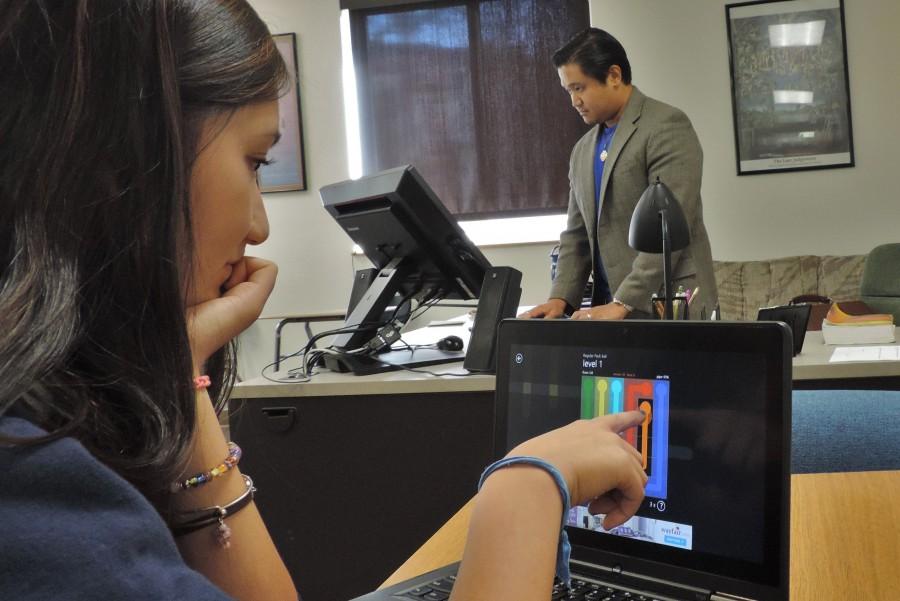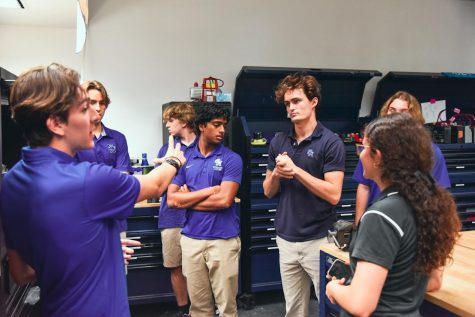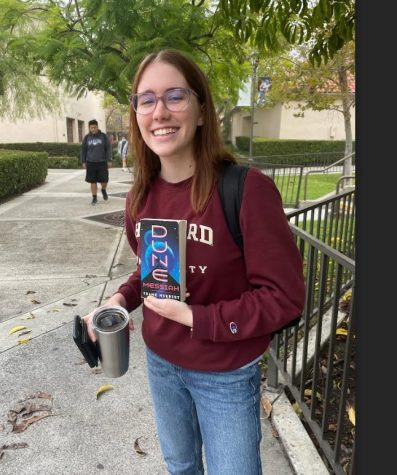Class police
New software allows teachers to see if students are working hard or hardly working.
Playing games in class is a risky endeavor with the new Class Policies classroom management software.
A chat on Skype and a quick game of Tetris on the Yoga may seem harmless, but the new and improved Class Policies has made its stealthy appearance on campus, catching distracted students left and right. Students, proceed with caution.
Teachers have a new monitoring tool to confirm the students’ focus and keep them from getting distracted, which happens more often than we like to admit.
“Class policies is basically a classroom management software,” said IT Director Scott Bricker. “In most classes your teacher can lock everything else out so that students can’t go wander or play games or check their personal email.”
So while you’re busy doodling nothing short of a beautiful masterpiece, teachers use Class Policies to shut down everything on the computer except what has been permitted.
This new installation gives teachers a better opportunity to control the focus level of their classes. The software also enables teachers to take screenshots of what appears on the students’ screen. In doing this, they ensure that their classrooms are not watching videos or deep into online shopping. Last year Dyno software was introduced to keep students on task with the tablets, but to many teachers and students, it wasn’t very efficient. Although the goal was the same, Dyno prevented easy accessibility for both staff and students.
“Whenever Dyno was used in any of my classes, none of my apps would open, even if we were allowed to open them, and the overall functionality of my tablet wasn’t very good,” said junior McKenna Malasavage.
With Class Policies, this functionality has greatly improved. Staff and students feel that Class Policies allows for a smoother way to monitor the tablets.
“The purpose and the intention is the same it just works a lot better than Dyno did,” said religion teacher Samantha Stephenson. “It’s a lot easier to use and has a much simpler format and it has fewer problems.”
Because teachers enjoy the program, it shouldn’t come as such a great surprise when that sneaky little message pops up warning you that you’re being watched. It definitely sounds creepier than it is. Whenever this warning pops up, the reaction of the students gives teachers an idea of who’s off task.
“Kids look around like, ‘Is it me, is it me, is it just happening to me?’ and everyone else is just working diligently,” said religion teacher Randy Lopez. “That tells me that kid was doing something he wasn’t supposed to be doing.”
The IT Department emphasizes that this is merely precautionary. However, students voice a different opinion.
“At times, I think it can be an invasion of privacy,” Malasavage said. “If I needed to email a teacher or deal with something else, I wouldn’t be able to without being notified or in trouble.”
Despite a potential invasion of privacy, Malasavage agrees that the software helps with focus.
“It helps me stay on task because I know that I can’t try anything else that might distract me” Malasavage said.
The controversy over this software continues, but the main goal is to keep a classroom on task.
“Even in faculty meetings and in my graduate classes it can be a useful tool keeping people from being distracted” Stephenson said. “It just eliminates temptations, that’s all.”
And students, it’s back to old school once again. Passing notes instead of Skyping, or doodling on a piece of notebook paper.







